Chateau-sur-Mer, like so many grand houses in Newport, evolved over its long life showing the influences of multiple owners, multiple architects, and multiple eras in and throughout its walls.
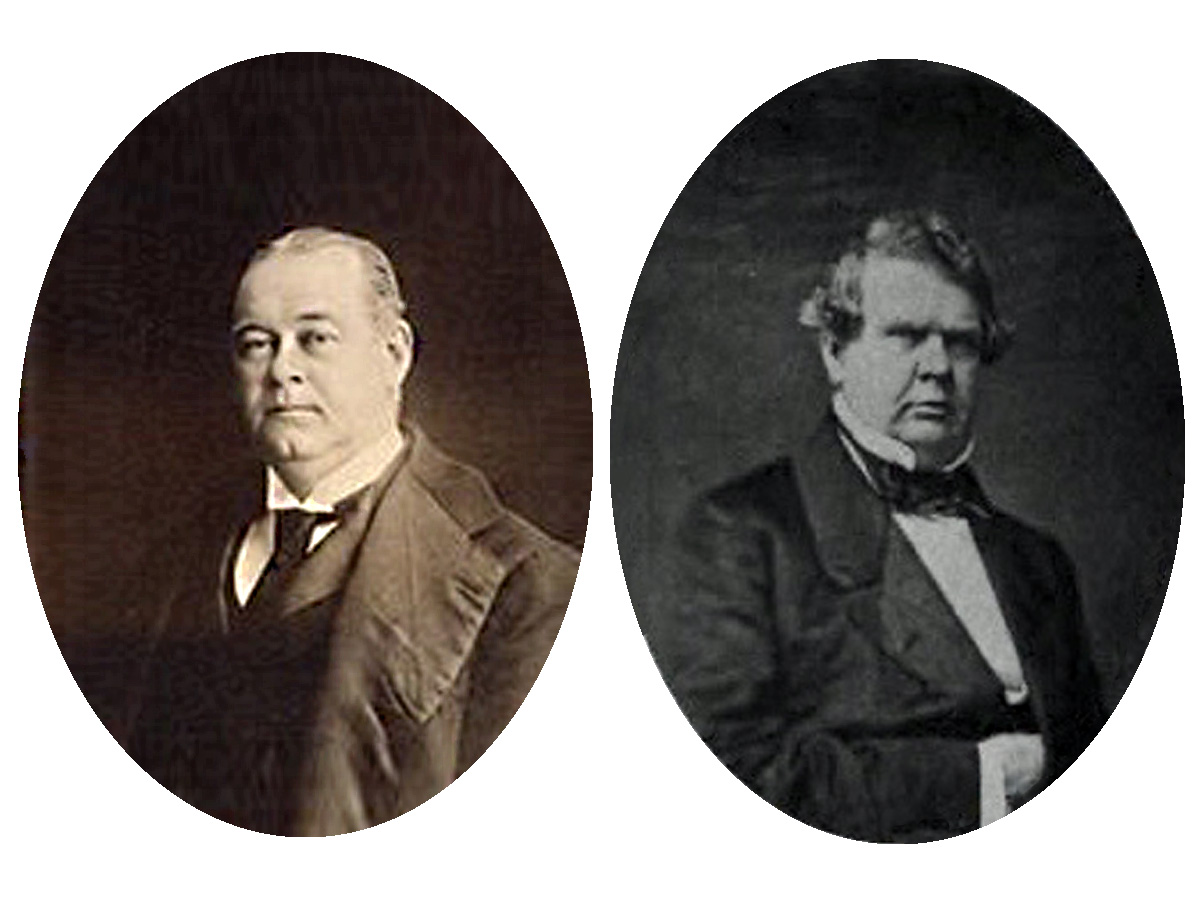
George Peabody Wetmore (Left) and his son William Shepard Wetmore (Right)
In 1851, William Shepard Wetmore, a prominent China trade merchant, commissioned Newport Seth Bradford to design and build a grand home for him. An Italianate villa design, a style popular in the mid-19th century, characterized by its symmetrical form, low-pitched roof, and decorative elements inspired by Italian Renaissance architecture. Bradford, although generally known for his Gothic Revival designs, embraced the challenge and created a unique interpretation of the Italianate style for the original Chateau-sur-Mer.
The building was constructed from a locally quarried Fall River Granite, and the house featured a central block flanked by two-story wings. The façade was adorned with round-arch windows, bracketed eaves, and a belvedere, a lookout tower offering panoramic views of the coastline. The interior boasted spacious rooms with high ceilings, intricate plasterwork, and marble fireplaces which were emblematic of the early Victorian era in which it was created.
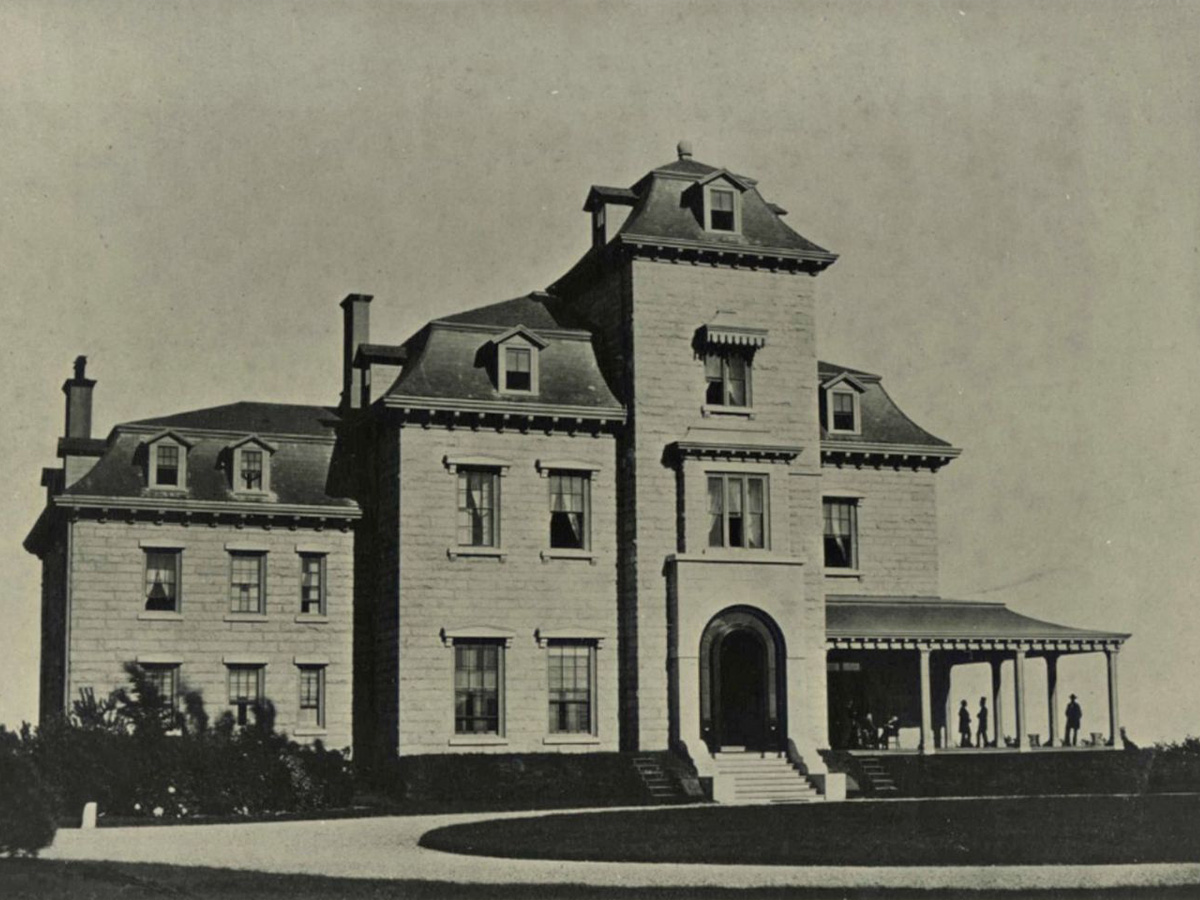
Historical photo of Chateau-sur-Mer
While the initial design reflected the Wetmore family’s taste for Italianate architecture, their vision for the house would continue to evolve over time. In 1869, George Peabody Wetmore (William’s son) married Edith Keteltas. During their European honeymoon in the 1870s, the couple was captivated by the grandeur of French Second Empire architecture, a style prominent in France during the reign of Napoleon III. The Second Empire style drew inspiration from 17th-century French châteaux and Italian Renaissance palaces, featuring mansard roofs, elaborate moldings, and dormer windows.
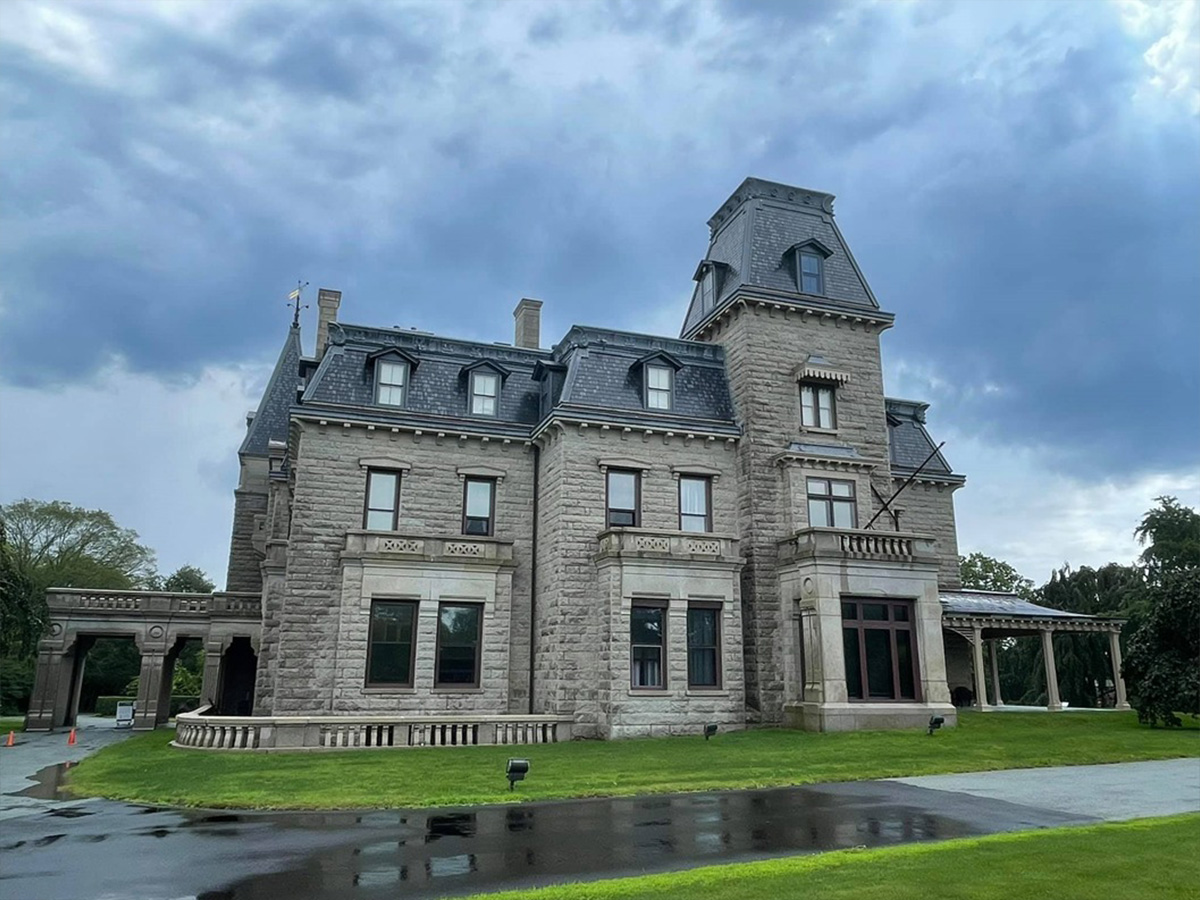
Current Photo of Chateau-sur-Mer
Upon returning from their trip, the Wetmores embarked on an ambitious project to transform Chateau-sur-Mer. They enlisted the renowned architect Richard Morris Hunt to remodel and redecorate the house in the French Second Empire style. Hunt, who was a leading figure in American architecture, had already made a name for himself designing notable buildings like the Vanderbilt Mansions in New York City.
Hunt’s redesign of Chateau-sur-Mer was nothing short of transformative. A three-story wing was added to the house, significantly expanding its footprint. A porte-cochere, a covered carriage entrance, was incorporated for added grandeur. The most striking addition was a four-story tower with a mansard roof, a signature element of the French Second Empire style.
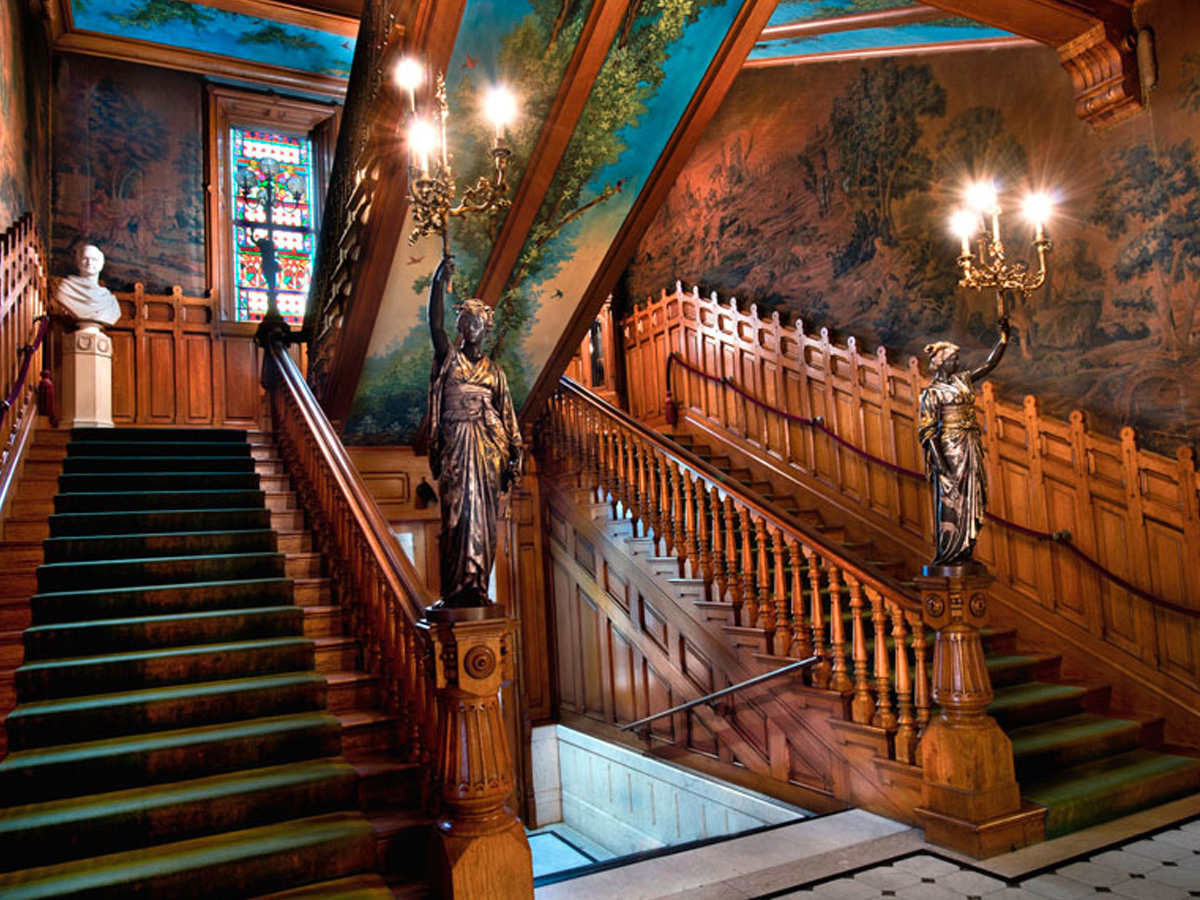
Ornate Interior Decoration and Grand Staircase
Hunt’s meticulous attention to detail extended beyond the exterior. The interiors were completely overhauled to reflect the new design aesthetic. Grand staircases, ornate fireplaces, and elaborately carved moldings replaced the original Italianate features. The color palette shifted towards richer tones, and opulent textiles and wallpaper adorned the walls.

Greek Revival style Gate with Egyptian Obelisk Posts
Hunt’s redesign also extended to the surrounding estate. He designed the entrance gate in a Greek Revival style with Egyptian obelisk posts, creating a cohesive and impressive approach to the mansion. The carriage house was also expanded to accommodate the Wetmore family’s growing collection of carriages.
The transformation of Chateau-sur-Mer from an Italianate villa to a French Second Empire masterpiece reflects the changing tastes of the Wetmore family and the architectural ingenuity of Seth Bradford and Richard Morris Hunt. Bradford’s initial design laid the foundation, while Hunt’s masterful redesign imbued the house with the grandeur and sophistication of the French Second Empire style.
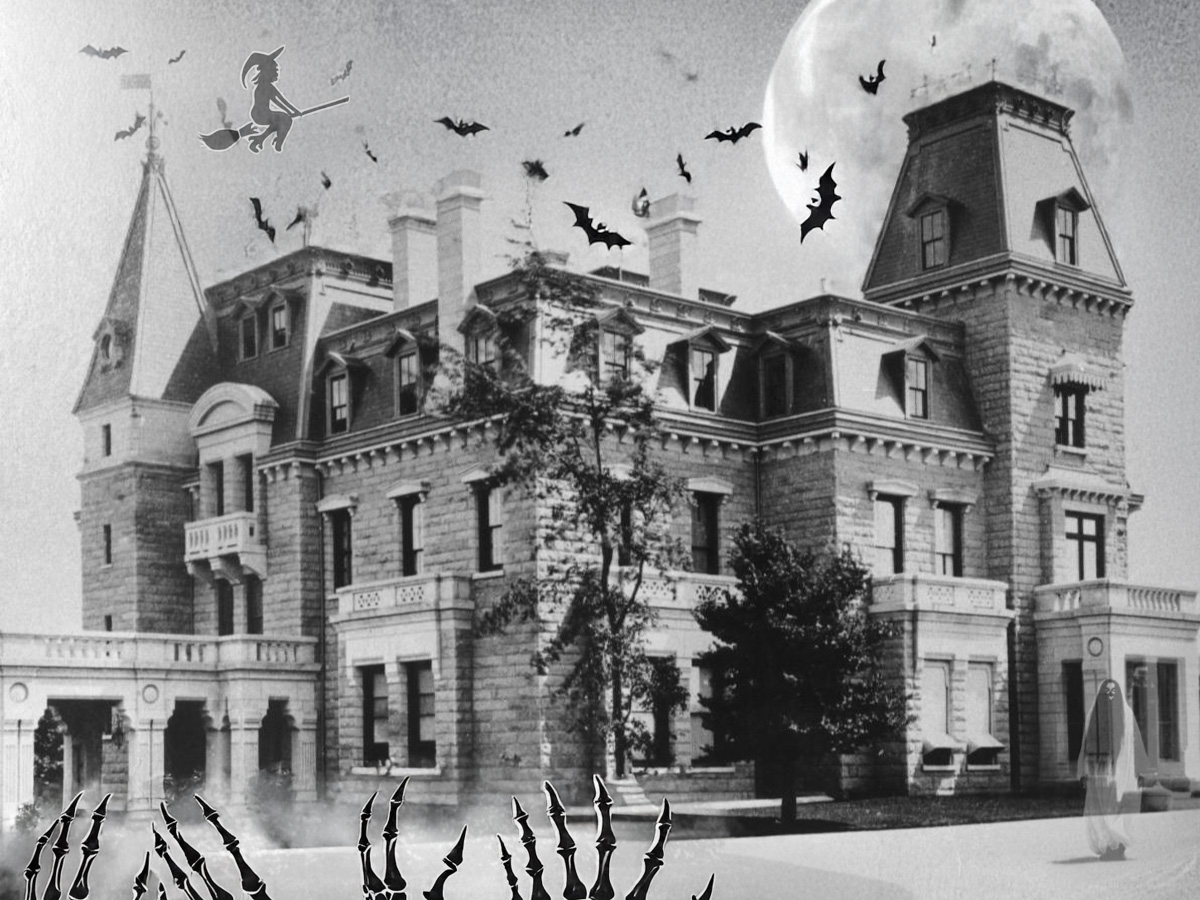
Halloween Themed Chateau-sur-Mer!
Today, Chateau-sur-Mer stands as a landmark property in the Preservation Society of Newport County collection of important structures and is open to the public as a house museum, allowing visitors to experience the architectural brilliance and rich history of Chateau-sur-Mer during the summer months. The building became a National Historic Landmark in 2006. It is also a model for the spooky mansions that are reflected in the work of Charles Addams, who was the cartoonist famous for creating the Addams family. And perhaps this is perfectly appropriate as Richard Morris Hunt was born on October 31,1827! Happy Halloween!
Ross Sinclair Cann, AIA, LEED AP, is an author, historian, educator, and a practicing architect at A4 Architecture who lives and works in Newport, Rhode Island. He studied with Professor Scully as an undergraduate at Yale and was a teaching assistant for Robert A.M. Stern at the Columbia School of Architecture in New York. He has worked on dozens of buildings by McKim Mead and White, Peabody and Sterns, and other noted architects of the Gilded Age and has frequently designed renovations and new buildings in the Queen Anne Revival and Shingle Styles.
